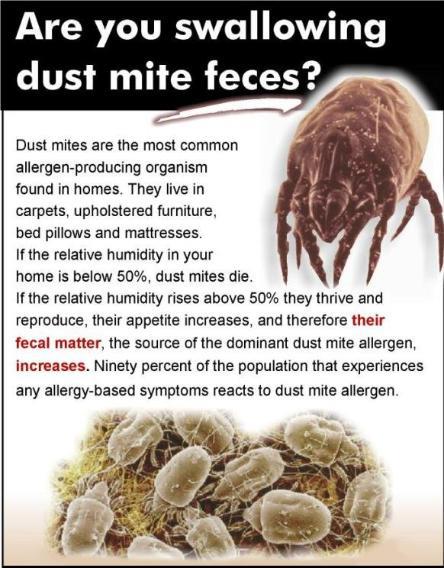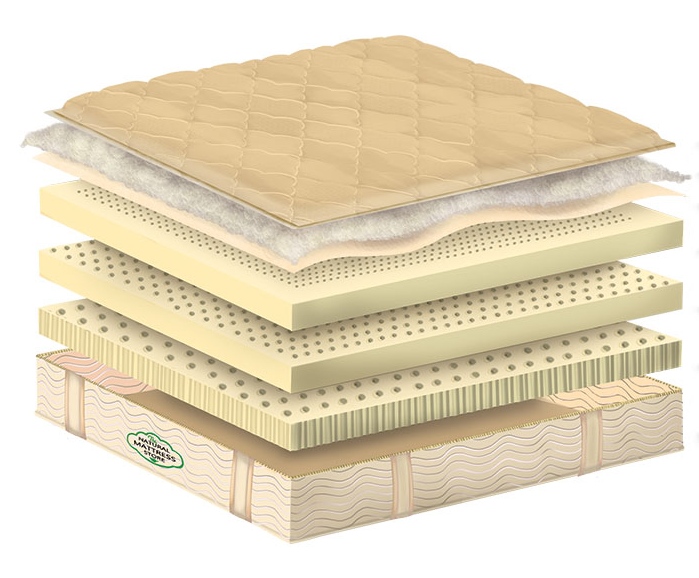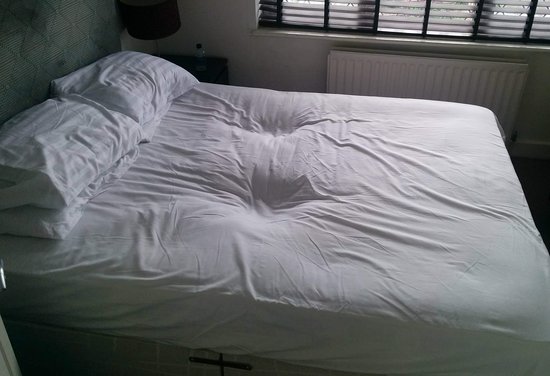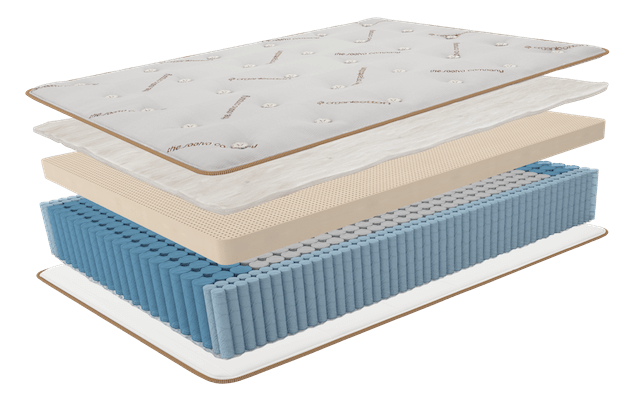Time To Replace Your Mattress? A 25 Year Mattress Expert’s Report
How often should you replace your mattress? It’s a question I get asked a lot, and as a mattress designer, engineer, and industry authority, I can tell you that you might be surprised at the answer.
First, let’s take a look at some mattress facts (sourced from TheRoundup.Org) so you can get a better handle on when it might be time to replace your mattress.
- More than 50,000 mattresses are thrown away each day, in the U.S.A.
- The average age of mattresses that are disposed of is 11.2 years.
- More than 75% of mattress materials can be recycled, including metal, fabrics, and foams.
- Only 5% of discarded mattresses are recycled.
- There are 60 mattress recycling facilities in the United States.
- The #1 reason for discarding a mattress is stains or soiling, usually an abrupt event.
Incredibly, most people have no real understanding or practical knowledge of just how dirty a mattress becomes even after a relatively short period of time.
Your sleep environment should be an oasis of cleanliness and health, considering our bodies are in immediate intimate contact with our mattresses for 7-9 hours a night. Still, we disregard the health of our mattress routinely, and often do not replace them for decades.

On average, Americans replace their mattresses every 20 years, often because of stains or physical defect like ruts and depressions.
But, it’s what you can’t see, that can be slowly collecting inside of your mattress, that can cause serious health issues.
Our parents and grandparents would often live out their entire marriages on the same mattress, primarily because they were expensive and cumbersome to replace.
These days, mattresses are reasonably priced and have many hypoallergenic and antimicrobial properties that are built into the fabrics and the interior components such as the foam layers and textiles used in the outer covering.
What’s Inside Of Your Mattress? Imagine The Floor In Your Car. Or Worse.
Here’s a list of stuff that accumulates in your mattress, even after a short period of time. This is worst case scenario, though, and if you are not using a mattress protector, you may need to replace your mattress sooner than you think:
- Dust Mites: These microscopic organisms thrive in warm, humid environments like mattresses. They can trigger allergies and respiratory issues in some individuals.
- Dead Skin Cells: People shed skin cells every day, and these can accumulate in mattresses, providing a food source for dust mites.
- Sweat and Body Oils: Over time, sweat and body fluids can seep into the mattress, creating a breeding ground for bacteria and potentially causing odors.
- Allergens: Pollen, pet dander, and other allergens can be carried into the mattress from outside and accumulate over time.
- Mold and Mildew: You should replace your mattress if it is exposed to moisture or high humidity, it can promote the growth of mold and mildew, which can trigger allergies and respiratory issues.
- Bacteria and Germs: Without proper cleaning, bacteria and germs from daily activities can accumulate on the mattress surface.
- Pet Urine or Stains: Accidental spills or pet accidents can leave behind stains and odors that may be difficult to remove completely, and you’ll need to immediately replace your mattress.
- Food Particles: If you snack or eat in bed, semi-soft foods, crumbs, and other waste provide the ideal breeding ground for microbes.

Of course, using a mattress protector can increase the lifespan of a mattress by providing a breathable yet waterproof barrier between you, your pets, and your mattress. When you decide to replace your mattress, you can also donate your gently used mattress to numerous charitable organizations.
It’s much easier to replace your mattress since most brands are readily available online in a “bed in a box” format and the technology to ship them has advanced dramatically.
Mattresses can be safely compressed and rolled, shipped to your door, and will quickly return to original factory size within minutes. You can check out my main page and get your bearings on where to start shopping if you feel you need to replace your mattress.
A typical price for a highly rated mattress today is around $800-1500, far less than a comparable mattress cost in the 1980’s. The reason for this is competition (many more boutique online brands competing), an awareness of mattress health and lifespan, and the convenience of shipping companies like Fedex.
Top Reasons You Should Replace Your Mattress Once Every 7-8 Years
If you are Generally speaking, you should replace your mattress if one or more of the following apply:
It’s more than 8 years old.
Your sleep is being interrupted because you mattress has become uncomfortable enough to awaken you. This includes lumps, bulging coils, or shifting contents.
It’s noticeably saggy, has developed dips or ruts, and creates pain when you lie on it.
It contains coils and has begun to squeak or creak, often due to rusting hinges where coils meet.
You find that you sleep better at a hotels, a relative’s home,
You notice an increase in allergies and/or asthma
You regularly wake up with muscle or joint stiffness
- You notice a persistent foul odor, even after removing your sheets.
- There is evidence that a liquid has penetrated to the inside of your mattress.
Essentially, you should replace your mattress if it’s no longer helping you get restful sleep, or if there visible signs of damage. There’s no clear-cut way to know for sure whether it’s time to replace your mattress– but generally speaking, if you’re thinking about a new bed, it’s likely worthwhile to make the investment sooner rather than later. Buying in the Spring and Summer is also smart, since the best deals of the year are advertised during this time.

One thing to keep in mind is that mattresses are notorious for being the “petri dishes” of your home, collecting all kinds or organisms, dead skin cells, dust mite feces, food particles, sweat and other bodily fluids.
Because humans move while they are sleeping, we constantly smear and grind these materials further and further into our mattresses.
After a few years, our mattresses can become full of toxic material. This is the driving force behind the concept that you should replace your mattress at least every 6-8 years.
Factors Influencing Mattress Lifespan
A variety of factors influence exactly how long a mattress can be used. Mattresses made with lofty layers of cotton or other textiles can easily pack down.
This results in a mattress getting very hard and forming dips and galleys that the user can simply no longer tolerate. Some key factors that impact mattress replacement guidelines include:
Mattress Components – The ingredients used to manufacture your mattress greatly influence its durability. Lower-quality innerspring and thinner, promotional grade all-foam mattresses tend to have the shortest lifespans, as they are prone to sagging and body impressions respectively.
Hybrid mattresses (coil and foam layers combined) can also have these issues, but since they’re often sold as more expensive mattresses, they are typically made with higher-quality materials.

These components include more dense foam layers, pocketed coils that resist packing down, and better textiles and fabrics at the top of the mattress, and they tend to be more durable.
Natural Latex mattresses are considered the most durable, in my opinion, lasting upwards of 8 years or more, because latex resists mashing down and has a highly elastic quality that springs back even after heavy use. You are less likely to have to replace your mattress as soon if you own a natural latex mattress.
Depending on the materials, there are a few guidelines you can use to predict durability when you make a new mattress purchase. For innerspring and hybrid mattresses, opt for a lower coil gauge (which means thicker coil wire used in the coils).
For mattresses with foam layers, look for higher foam densities and higher ILD’s (Indentation Load Deflection, a metric of density and viscosity with foams). Finally, if you buy a latex mattress, make sure you’re getting natural latex rather than synthetic latex.
Synthetic latex is actually made from a petroleum based compound called SBR, and has a significantly shorter lifespan since it tends to dry out and crack, especially even if exposed to indirect sunlight.
In fact, foam mattresses in general can degrade quite fast if exposed to sunlight, even when covered with fabric. Over time, because foam is so photo-reactive, crumbling and discoloration can occur causing the foam layers to shed, pill and turn brown, hardening like toasted bread.
General guidelines and tips that will help you get a lot more lifespan out of your mattress
Maintenance & Care – Like any other home furnishing item, you can reduce the likelihood of having to replace your mattress if you take proper care of it. This means that rotating your mattress head to foot every 6 months or so (unless the manufacturer recommends otherwise) and installing a mattress protector to protect against liquid spills and particulate matter, can add a few years to your mattress lifespan.
Using A Proper Foundation Or Base- This is often a contributing factor to mattress that fails long before its lifespan. Remember that a mattress will follow the contour of whatever you place it on, so if you use a foundation or box spring that has indentations in it, or is likely to bow or dip when weight is placed on it, you will likely experience mattress failure.
Here’s my tip: Stand on the foundation you intend to use, in the middle of the foundation. Here’s a link to our favorite foundation, available online.
Whether it is a solid top box spring, a platform bed with slats, or an adjustable base, you should be able to apply your body weight in a concentrated are with absolutely no depression. Otherwise, replace it at once. Many mattresses are sold with matching foundations or adjustable bases.
Body Size And Weight – Your weight, as well as the weight of your partner, plays a big role in how long a mattress will last. Heavier sleepers will find that mattresses may indent and form dips and galleys much faster quicker while lightweight sleepers will have less of an impact.
Similarly, a mattress accommodating a couple will likely fail sooner than a mattress for one person.

I recommend that obese mattress owners find the firmest mattress they can tolerate, for example, since firmer foam layers and more rigid pocketed coil systems simply don’t break down as fast as other materials. If you need to replace your mattress because it is not designed for bigger bodies, check out my page which reviews more durable mattresses here.
Children & Pets – If you share your mattress with small children or with pets it’s probable that you will need to replace your mattress more frequently. In addition to the extra weight, both animals and children are more likely to cause stains and/or unrepairable damage to a mattress. Also note, that most manufacturer warranties for mattresses are instantly voided in the even of a liquid spill or stain. Always invest in a mattress protector.
Is a New Mattress Worth the Cost?
These days, largely due to intense competition with many online mattress stories scampering to get your business, the cost of getting a really good mattress has gone down, while the quality and different styles of mattresses available has improved substantially.

Most mattress companies use carefully managed manufacturing facilities that are highly efficient at building mattresses and shipping them, and there is a vast network of materials to use in mattress construction from natural latex, to specialized cooling gel foams, textiles like bamboo, organic cotton, cashmere, and other components.
For one, a new mattress just feels good, and can improve the quality of your sleep, which influences everything from your energy levels to mood to your overall health. Here are some benefits of a new mattress include:
More Restorative And Rejuvenating Sleep – A 2009 peer-reviewed clinical trial found that new mattresses significantly improve sleep performance, and even reduced back pain and anxiety in the trial population. When you replace your mattress, it is very much a fresh start, and it can be emotionally uplifting as well.
Further, new mattress owners typically report that their sleep quality improved after purchasing a new bed. This is likely because, unlike our parents before us, there are more options to choose from to suit a variety of tastes. When you replace your mattress, I advise looking at new options by category, so you get a mattress tailored to your body, sleep habits, as well as your partner’s.
Pain Reduction – If you wake up with pain or stiffness in your back, shoulders, hip or neck, it’s likely that your mattress is a substantial part of the problem. Inferior and aging mattresses tend to sag in places, which forces your body to cantilever muscles, causing lactic acid buildup in muscle fibers, resulting in severe pain. When you experience a sudden onset of pain when you go to bed, it might be time to replace your mattress.

A poorly made or older mattress has limited ability to provide proper spine alignment, resulting in constant back pain.
Reduced Motion Transfer – Aging and poorly made mattresses tend to transfer more motion from one side of the bed to the other. This means that a partner changing positions during the night can disrupt your sleep. A new mattress, especially an all-foam or hybrid bed made using memory foam – will dampen motion caused by tossing and turning, and cause less sleep disruption, especially with couples.
Reduced Allergies And Asthma Attacks – Aging mattresses accumulate dust mites, mold, bacteria and other allergens at a fast rate. A regional study by NIH found that mattresses had the highest concentration of dust mites out of any household item, and other allergens are also very common in older mattresses.
If you’ve found that your allergies or asthma symptoms have worsened, your mattress may be partially to blame. When you replace your mattress, using a mattress protector is critical to keeping organisms from gathering on your sleep surface.
If you’re having trouble getting motivated to buy a new mattress, I get it. Shopping for a new mattress can be miserable, and mysterious, wearing you down. Start by visiting out Trusted Dealer page, where we offer a handful of carefully researched mattress options with descriptions and just the right amount of information you need.
You’ll also get our specially arranged deals with our retail partners, so you’ll get a better price on a quality mattress that will improve every aspect of your life.
Also, remember how important getting restorative sleep really is, and that you will spend roughly 1/3rd of your life in bed – and there’s no better way to invest in your own well being.
Just How Much Nasty Stuff Collects Inside Of An Old Mattress?
Over time, an older mattress can accumulate feces and other unsanitary materials, especially if it has not been covered with a waterproof and impermeable mattress protector. Mattresses can act as a breeding ground for dust mites, bed bugs, and other microorganisms, which can leave behind fecal matter, shed skin, and other waste products. Additionally, if a mattress is exposed to moisture or spills, it can create an environment conducive to bacterial growth and mold formation.
It is possible to acquire a Staphylococcus (Staph) infection from a dirty or old mattress, although it is not a common mode of transmission. Staph bacteria, including the strains Staphylococcus aureus and Methicillin-resistant Staphylococcus aureus (MRSA), can survive on surfaces for some time, including mattresses.
If the mattress is contaminated with Staph bacteria, and there is direct contact between the bacteria and a person’s skin, there is a potential for infection to occur. This can happen if there are open wounds, cuts, or abrasions on the skin that come into contact with the bacteria. Additionally, if a person has poor hygiene practices or compromised immune system, the risk of infection may be higher.
To minimize the risk of Staph infection from a mattress, it is important to maintain good hygiene and cleanliness. Regularly cleaning and disinfecting the mattress, especially if it has been exposed to bodily fluids or other contaminants, can help reduce the chances of bacterial growth and transmission. It is also advisable to wash bedding regularly and follow proper hygiene practices, such as regularly washing hands, to minimize the spread of bacteria.
Your Mattress Can Double In Weight In Just 10 Years
For further information, check out this article on WebMD that describes the biohazards that quickly pile up in a mattress including up to 500 million dead skin cells per day. The fact that that biomaterials collect in very large amounts in mattresses (again, a lot less if you are using a mattress protector tht is water-proof, not water resistant) is a very strong argument to making sure you replace your mattress frequently.
Mattresses increase in weight over time as they accumulate various forms of bio material such as dead skin cells, dust mites, sweat, and bodily fluids. The exact amount of weight gain can vary based on factors like mattress type, usage, and maintenance.
A study titled “The Health Risks of Bedding” published in the Journal of Allergy and Clinical Immunology in 2001 found that a mattress can double in weight over a period of 10 years due to the accumulation of dust mites and their waste, dead skin cells, and other debris. This accumulation can contribute to the overall weight gain of the mattress.
Similarly, another study published in the Journal of Environmental Health in 2005 examined mattresses used in homes and found that the weight of mattresses increased significantly over time due to the accumulation of allergens, dust mites, and their waste products.
Keep in mind that the rate of “mattress weight gain” can vary based on factors such as the frequency of mattress cleaning, the use of mattress protectors, and the overall environmental conditions in the sleeping area. Regular maintenance, such as vacuuming the mattress and using allergen-proof covers, can help reduce the accumulation of bio material and the associated weight gain. Replace your mattress if you can, at least once every eight years.
